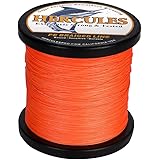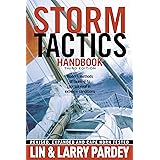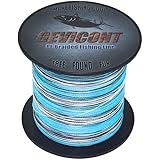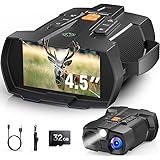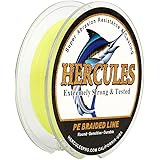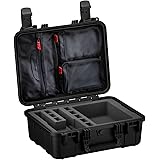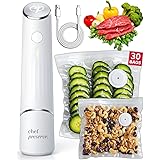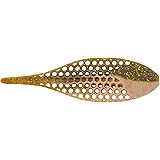Mastering Austere Environments: A Deep Dive into Advanced Wilderness Medical Gear
In the challenging world of emergency medicine, providing high-level care often extends beyond the urban landscape. Medical professionals frequently face scenarios demanding expertise in remote, unforgiving environments where traditional resources are scarce and response times are prolonged. This presents a unique logistical and clinical challenge: how does one carry the comprehensive tools necessary for advanced life support (ALS) into the wilderness while maintaining mobility and readiness?
Fortunately, specialized solutions exist. The video above offers an insightful glimpse into the meticulously organized medical pack of a paramedic on an All Hazards Response Team, designed precisely for such austere conditions. This article will further unpack the critical components and strategic thinking behind assembling an advanced wilderness medical kit, expanding on the tactical choices and essential gear for sustained operations.
The Foundation: Building a Robust Wilderness Medical Kit
The selection of the right pack is paramount when assembling an advanced wilderness medical kit. As highlighted in the video, the Mystery Ranch RATS Pack stands out as an exceptional choice, distinguished by its substantial capacity and ergonomic design built for extended wear. Unlike conventional medical packs, which often feature flimsy strap systems intended for quick deployment over armor, the RATS Pack boasts heavily padded shoulder straps, making it suitable for rigorous ruck marches and prolonged treks through difficult terrain.
Beyond the pack itself, the strategic placement of equipment is crucial for efficient response in high-stress situations. On the exterior, certain life-saving tools require immediate access. Consider the vital importance of a traction splint, like the Tactical Traction Device from North American Rescue (formerly the Kendrick traction device). This specialized apparatus is designed to manage mid-shaft femur fractures, a potentially deadly injury due to the high vascularity of the leg. By applying traction, it realigns the bone ends, significantly reducing pain and mitigating internal bleeding, thereby preventing further compromise to the patient’s circulatory system.
Imagine if a hiker sustains a mid-shaft femur fracture deep within a canyon; without a traction splint, pain management becomes incredibly difficult, and the risk of hypovolemic shock escalates rapidly. Its external placement ensures it is accessible even before the main pack is opened, a testament to its critical role in trauma care. Similarly, immediate trauma supplies should be readily available. The video demonstrates the utility of an Individual First Aid Kit (IFAK), even a simple 5.11 pouch, for minor yet impactful items. Within such a kit, items like heavy-duty Bear Claw gloves provide personal protective equipment (PPE), crucial for maintaining sterile conditions and protecting responders from bloodborne pathogens. An eye shield addresses ocular trauma, while a persistent nosebleed might be controlled with a simple nose clamp. Duct tape, eye wash (saline bullets), and an assortment of Band-Aids cater to common, non-life-threatening injuries that can still impair function and comfort in the field.
Furthermore, the inclusion of over-the-counter (OTC) medications from kits like those found at REI, such as anti-diarrheals, electrolyte tabs, antihistamines, ibuprofen, acetaminophen, and antacids, significantly enhances patient comfort and addresses common ailments that, while not immediately life-threatening, can debilitate a patient over time. These seemingly minor items prevent further medical issues and sustain a patient’s well-being until more comprehensive care can be rendered. Strategic integration of a Blue Force Gear micro trauma kit or similar “blow-out kits” on the pack’s exterior or easily accessible positions ensures critical hemorrhage control and airway management tools are literally at arm’s reach. These kits often contain necessities like an NPA (nasopharyngeal airway), trauma dressing, gloves, combat gauze, chest seals, and sometimes even a needle decompression device, allowing for rapid intervention against the most immediate threats to life, such as tension pneumothorax or severe bleeding.
Beyond Basic First Aid: Advanced Tools for Critical Interventions
In a wilderness scenario, problem-solving often requires versatile tools that can serve multiple purposes. The Winkler Knives Rescue Axe, as featured, exemplifies this philosophy. Beyond its obvious utility as an axe for shelter building or constructing an improvised litter, its integrated hammer tool, spike, and can opener provide crucial capabilities for extrication and emergency access. Imagine a vehicle accident in a remote area; the can opener feature can efficiently cut through a windshield, offering quick access to entrapped patients when traditional extrication tools are unavailable. This tool is a testament to the need for durable, multi-functional instruments in advanced wilderness medical gear.
Patient evacuation is another significant challenge in austere environments. The North American Rescue Quick Litter, chosen for its lightweight and compact design, offers a vital solution for rapid patient movement. While not as robust as a full-sized litter, its ability to quickly secure and drag a patient out of a dangerous area, or transfer them to a more substantial transport, is invaluable. Its small footprint allows for sustainment items to be packed alongside it, balancing the need for patient transport with other long-term operational requirements.
The most distinguishing feature of an advanced wilderness medical kit for a paramedic unit is the inclusion of a comprehensive array of Advanced Life Support (ALS) medications. These are not merely comfort items but potent pharmacological agents capable of altering physiological states and saving lives in critical moments. The video lists a substantial array of medications, reflecting the advanced capabilities required for sustained operations:
- **Sedation & Paralytics for Airway Management (RSI):** Etomidate, Ketamine, Ativan, Midazolam, Rocuronium, Succinylcholine. These are crucial for Rapid Sequence Intubation (RSI) and managing agitated patients, enabling secure airway control in potentially unstable environments.
- **Cardiac & Allergic Reactions:** Epi 1:1,000 and 1:10,000, Benadryl, Aspirin, Mag Sulfate, Nitro, Atropine, Amiodarone, Adenosine, Cardizem. This suite addresses everything from anaphylaxis and cardiac arrest to various dysrhythmias and acute coronary syndromes.
- **Pain Management:** Fentanyl, Morphine. Providing effective pain relief is not only humanitarian but also critical for managing shock and preventing further patient deterioration in prolonged care situations.
- **Metabolic & Other Critical Conditions:** Zofran (nausea), D10 & Glucagon (hypoglycemia), Calcium Chloride (hyperkalemia), Sodium Bicarb (acidosis/OD), Albuterol (bronchoconstriction), Cyanokit (cyanide poisoning), Narcan (opioid overdose), Dopamine (shock/bradycardia).
The mention of TXA (Tranexamic Acid) is particularly noteworthy. While not yet carried by Sam’s service, TXA is an antifibrinolytic agent gaining significant traction in prehospital trauma care for its ability to reduce hemorrhage and improve survival in bleeding trauma patients. Its absence highlights an evolving need in advanced wilderness medical gear, signifying the continuous development and adoption of new best practices in prolonged field care.
Mastering Airway, Breathing, and Circulation in the Wild
The organization of an advanced medical pack often follows a systematic patient assessment approach, such as the MARCH algorithm (Massive Hemorrhage, Airway, Respirations, Circulation, Hypothermia/Head Injury). This structured method ensures that life-threatening injuries are addressed in a prioritized sequence. While massive hemorrhage is tackled with external tourniquets and hemostatics, the internal compartments of the pack are meticulously arranged to address subsequent critical steps.
Airway Management
Airway management is paramount. The kit includes a variety of nasopharyngeal airways (NPAs) to maintain an open airway in unconscious or semi-conscious patients. For more advanced interventions, a dedicated airway roll contains a laryngoscope with multiple blades (Mac 4, Miller), a scalpel for surgical cricothyrotomies, and endotracheal tubes in various sizes. The inclusion of a bougie is a critical detail, as this flexible introducer significantly aids in difficult intubations and facilitates successful surgical airways, essentially acting as a life-saving “plan B” when direct visualization is challenging. The presence of King Tubes, supraglottic airways that provide a backup when endotracheal intubation is not feasible or fails, further underscores the comprehensive nature of this advanced wilderness medical gear. McGill forceps are also carried for removing foreign body obstructions, completing a versatile set of airway tools.
Breathing Support
Following airway, ensuring adequate breathing is the next priority. The Micro BVM (Bag Valve Mask) allows medical professionals to assist a patient’s ventilation effectively, delivering high concentrations of oxygen when paired with an O2 tank (carried separately for weight considerations in the wilderness) or ambient air. A crucial component for traumatic injuries, particularly those involving the chest, is a robust supply of chest seals. These are indispensable for managing sucking chest wounds, preventing tension pneumothorax, and can even be used as occlusive dressings for other large wounds, such as those to the neck or for temporary coverage of burns. Their versatility makes them a cornerstone of any advanced trauma kit.
Further breathing and circulation support items include Coban, medical tape, and other wraps, which are invaluable for securing dressings, improvising splints, or providing compression. The IT Clamp, a novel device mentioned in the video, acts as an instant suture for scalp, neck, or junctional wounds, offering immediate hemorrhage control when rapid closure is needed. This demonstrates a proactive approach to managing complex bleeding in situations where definitive surgical care is hours away.
Finally, a SAM splint, a highly pliable and versatile splint, provides immediate stabilization for a multitude of musculoskeletal injuries—from sprained ankles to fractured limbs. While other splints can be improvised in the wilderness, the SAM splint offers a reliable, pre-made solution for immediate and effective immobilization.
The Essentials of Patient Assessment and Comfort in Remote Settings
Effective patient assessment in the wilderness requires durable and reliable tools, especially given the environmental challenges. The vitals pocket, as demonstrated, houses essential diagnostic equipment. A Welch Allen blood pressure cuff, chosen for its robust design and clear dial, provides crucial hemodynamic data. The Littmann Master Cardiology stethoscope, a trusted instrument among medical professionals, allows for accurate auscultation of heart and lung sounds. A pulse oximeter, such as the Innovo brand mentioned, provides immediate feedback on heart rate and oxygen saturation, although its utility can be limited by cold, wet conditions that lead to false readings. Nonetheless, in milder conditions or during marathons, it offers invaluable continuous monitoring. A penlight completes the assessment kit, used for pupil checks, examining wounds, or basic oral/nasal cavity inspections.
Patient warming is an often-underestimated but critically important aspect of trauma care, especially in austere environments where hypothermia can rapidly complicate injuries and worsen outcomes. The North American Rescue warming blanket, a specialized device that actively heats and cocoons a patient, is vital. When combined with a reflective blanket and a foam pad to insulate the patient from the cold ground, it creates a powerful barrier against heat loss. Imagine a patient with significant trauma, already in shock, lying on cold, wet ground; aggressive warming can be the difference between life and death by preventing the vicious cycle of coagulopathy, acidosis, and hypothermia. This commitment to patient comfort and physiological stability underscores the comprehensive nature of advanced wilderness medical gear.
The kit also includes general trauma pads, like an abdominal trauma pad, which serve as large, sterile dressings for significant wounds, such as eviscerations, protecting them from contamination and external trauma during transport. These larger pads address high-surface area injuries effectively.
As the video indicates, an advanced medical pack of this caliber is not static; it is a dynamic system that evolves with experience and new deployments. Lessons learned from fireline medical support, ultra-marathons, and FEMA disaster response continually refine the contents, ensuring that the kit remains at the forefront of wilderness medical readiness. This ongoing adaptation guarantees that medical professionals are always equipped with the best possible tools to provide advanced care, regardless of the challenging environment.


